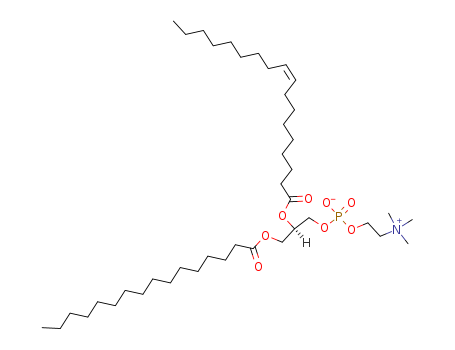- Chemical Name:1-Palmitoyl-2-oleoyl-sn-glycero-3-phosphocholine
- CAS No.:26853-31-6
- Molecular Formula:C42H82NO8P
- Molecular Weight:760.089
- Hs Code.:2923900090
- European Community (EC) Number:248-056-7
- UNII:TE895536Y5
- DSSTox Substance ID:DTXSID101029642
- Wikipedia:POPC
- Wikidata:Q10860475
- Metabolomics Workbench ID:13298
- Mol file:26853-31-6.mol
Synonyms:1-palmitoyl-2-oleoyl-lecithin;1-palmitoyl-2-oleoyl-phosphatidylcholine;1-palmitoyl-2-oleoyl-sn-glycero-3-phosphatidylcholine;1-palmitoyl-2-oleoyl-sn-glycero-3-phosphocholine;1-palmitoyl-2-oleoylphosphatidylcholine;1-palmitoyl-2-oleoylphosphatidylcholine, (R)-(Z)-isomer;1-palmotoyl-2-oleoylglycero-3-phosphocholine;1-POPC;alpha-phosphatidylcholine-beta-oleoyl-gamma-palmitoyl;beta-oleoyl-gamma-palmitoyl-L-alpha-phosphatidylcholine;palmitoyloleoylphosphatidylcholine;POPC lipid





